Red Kangaroo
- January 22, 2024
- 0 comment
The Red Kangaroo, scientifically known as Macropus rufus, is an iconic marsupial native to Australia, often hailed as a symbol of the Australian outback. What sets the Red Kangaroo apart is its remarkable adaptability to the harsh and arid environments of the continent. These kangaroos are renowned for their imposing size, with males reaching heights of up to 6 feet and weighing as much as 200 pounds, making them the largest marsupials globally. Their reddish-brown fur helps them blend seamlessly into the dry landscapes, offering some camouflage against potential predators.
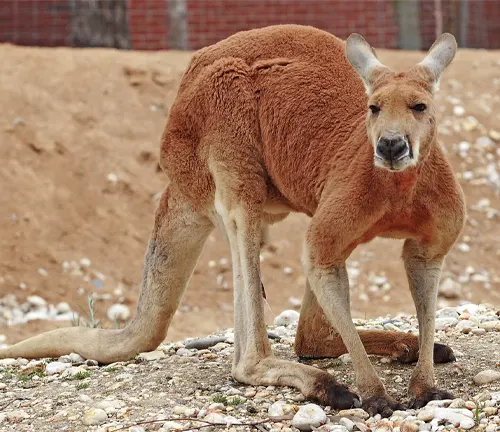
Beyond their physical attributes, Red Kangaroos are fascinating for their social behavior and group dynamics. They often form loose-knit groups known as mobs, led by a dominant male known as the “boomer.” The breeding season occurs in late spring and early summer, with females giving birth to a single joey, which spends several months in the mother’s pouch before venturing out.
Adaptations for survival in the outback include their long legs and powerful hind limbs, allowing them to cover vast distances efficiently, and their ability to leap up to 25 feet in a single bound at speeds of up to 35 mph. They have also developed efficient thermoregulation mechanisms to combat extreme temperatures and conserve water during dry periods.
| Specification | Description |
|---|---|
| Scientific Name | Macropus rufus |
| Common Name | Red Kangaroo |
| Habitat | Australian outback, deserts, grasslands, woodlands |
| Size (Male) | Up to 6 feet in height |
| Size (Female) | 4 to 5 feet in height |
| Weight (Male) | Up to 200 pounds |
| Weight (Female) | Up to 100 pounds |
| Fur Color | Reddish-brown |
| Group Structure | Mobs or troops, led by a dominant male (“boomer”) |
| Breeding Season | Late spring and early summer |
| Reproduction | Single joey born after 30-day gestation, pouch-bound for several months |
| Adaptations | Powerful hind limbs, efficient thermoregulation |
| Jumping Ability | Leaps up to 25 feet in a single bound, reaching speeds of up to 35 mph |
| Lifespan (Wild) | 6 to 8 years |
| Lifespan (Captivity) | Up to 20 years |
| Conservation Status | Vulnerable due to habitat destruction and hunting |
| Key Threats | Habitat loss, hunting, and climate change |
Australia’s Iconic Marsupial

The Red Kangaroo, scientifically known as Macropus rufus, stands as one of the most iconic symbols of Australian wildlife. Renowned for its striking appearance and remarkable adaptations, this marsupial roams the vast and arid landscapes of the Australian outback. In this article, we will delve into the world of the Red Kangaroo, exploring its geographic distribution, physical characteristics, behavior, adaptations for survival, and the challenges it faces in terms of conservation.
Geographic Distribution
Red Kangaroos are true outback dwellers, with a range spanning various regions across Australia. They can be found in Western Australia, South Australia, Queensland, New South Wales, and the Northern Territory. Their adaptability to diverse climatic conditions allows them to thrive from the scorching central deserts to the temperate zones along the coasts.
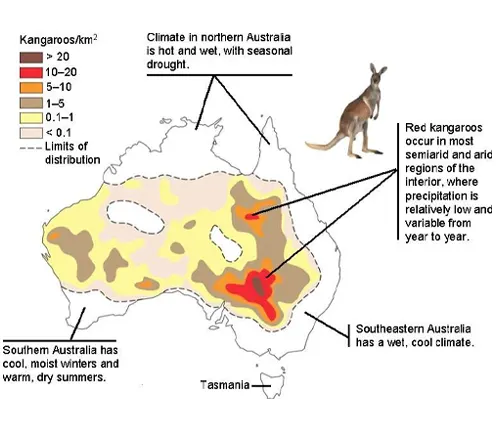
Physical Characteristics

Size and Weight
These kangaroos are the giants of the marsupial world. Males can reach towering heights of up to 6 feet and weigh as much as 200 pounds, making them the largest marsupials globally. Females are relatively smaller, standing at around 4 to 5 feet and weighing up to 100 pounds.
Reddish Fur
As their name suggests, Red Kangaroos boast reddish-brown fur that helps them blend seamlessly into their arid surroundings. This unique coloration provides some camouflage against potential predators.
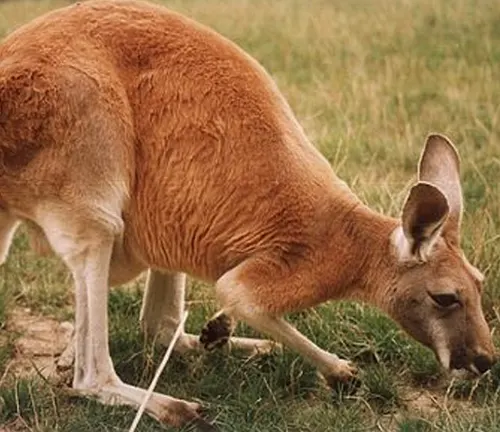
Behavior and Social Structure
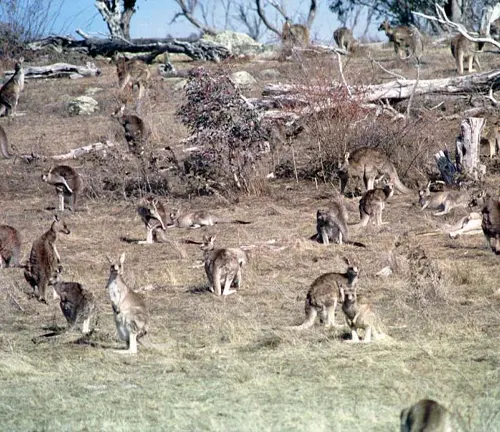
Group Dynamics
They often form loose-knit groups known as mobs or troops. These groups consist of individuals of varying ages and are led by a dominant male, known as the “boomer.” Within these mobs, there is a hierarchy, and disputes are settled through displays of dominance, including boxing matches.
Mating and Reproduction
The breeding season for Red Kangaroos typically occurs in late spring and early summer. The females, known as “flyers,” give birth to a single joey after a gestation period of about 30 days. The joey then spends several months in the mother’s pouch before gradually venturing out.
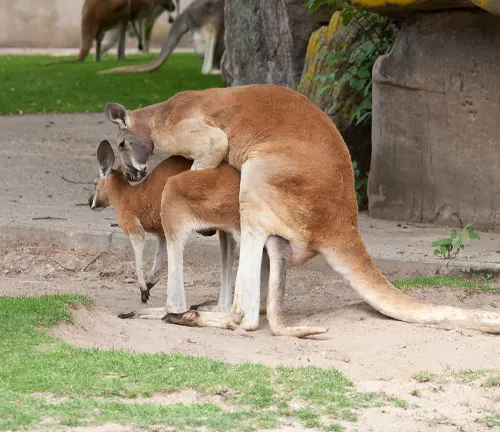
Adaptations for Survival
Red Kangaroos have evolved various adaptations that enable them to thrive in the challenging Australian outback.
Long Legs and Powerful Hind Limbs
Their long legs and muscular hind limbs allow them to cover large distances efficiently. They are incredible jumpers, capable of leaping up to 25 feet in a single bound, reaching speeds of up to 35 mph.
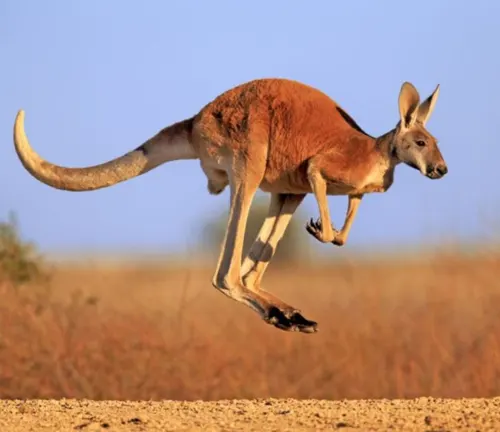

Efficient Thermoregulation
To combat the extreme temperatures of the outback, Red Kangaroos have developed efficient thermoregulation mechanisms. They can reduce their metabolic rate and conserve water during dry periods, ensuring their survival in this harsh environment.
Conservation Status
Human Interaction
Habitat destruction due to urbanization and agriculture has resulted in the loss of their natural habitat. Additionally, they are often hunted for their meat and hides, which poses a significant challenge to their populations.
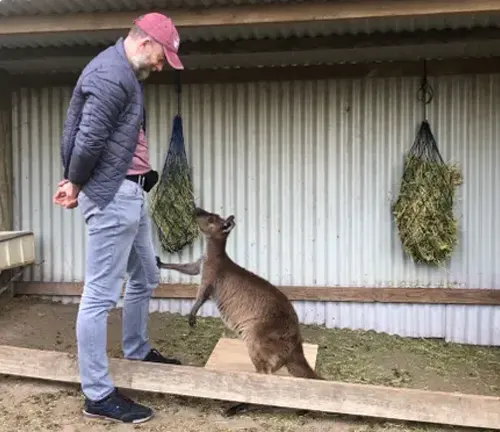
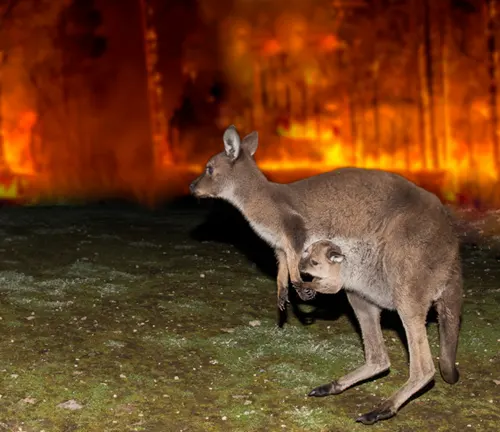
Climate Change
The increasing unpredictability of weather patterns due to climate change also poses a threat to their survival by impacting their food and water sources.
Different Species
Eastern Grey Kangaroo
(Macropus giganteus)
These kangaroos are known for their soft grey fur and are found in the eastern and southeastern regions of Australia. They are smaller than Red Kangaroos and have a more timid disposition.
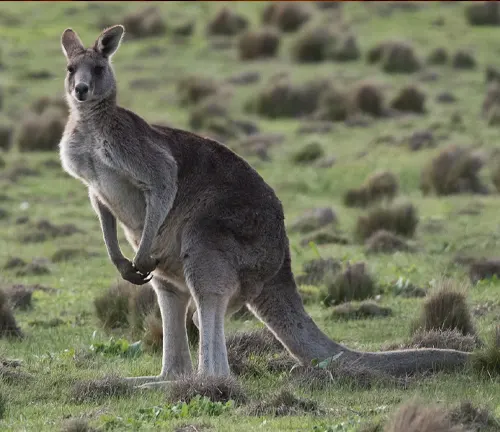
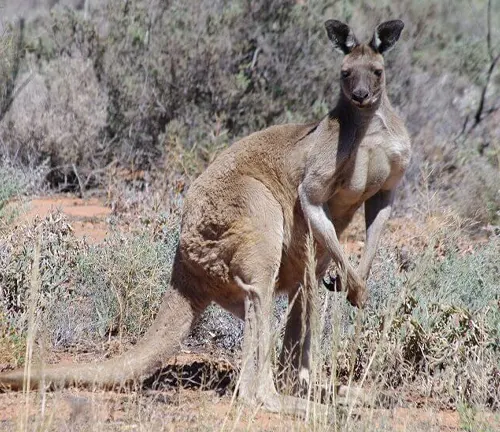
Western Grey Kangaroo
(Macropus fuliginosus)
Western Grey Kangaroos are native to the southwestern parts of Australia. They have a more subdued grey-brown coloration compared to the Red Kangaroo.
Antilopine Kangaroo
(Macropus antilopinus)
These kangaroos inhabit the northern parts of Australia, particularly in tropical savannah woodlands. They are characterized by their reddish-brown fur and relatively short faces.

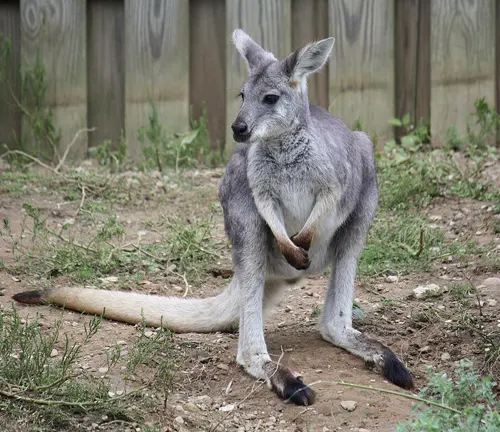
Wallaroo
(Macropus robustus)
Wallaroos are intermediate in size between wallabies and kangaroos. They have short, stocky bodies and are found in various regions across Australia.
Black Wallaroo
(Macropus bernardus)
This species is relatively small and is known for its dark black or brownish-black fur. They are found in the northern regions of Australia.
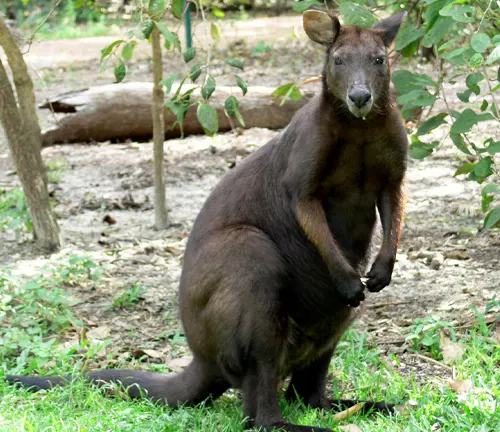
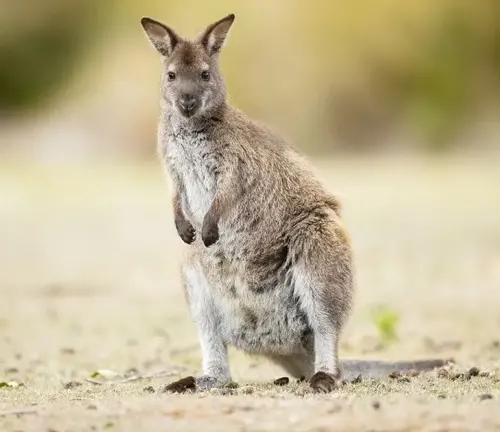
Red-Necked Wallaby
(Macropus rufogriseus)
Although not a kangaroo, the Red-Necked Wallaby is a marsupial closely related to kangaroos. They are smaller and have a distinct red or rusty coloration on their neck and shoulders.
Frequently Asked Question (FAQs)
- What is the significance of the Red Kangaroo in Australian culture?
Red Kangaroos hold cultural significance as an iconic symbol of Australia’s unique wildlife. They are often featured in art, literature, and as mascots for various organizations. - Do Red Kangaroos make any vocalizations?
Red Kangaroos are generally quiet animals, but they can produce low grunts and clucking sounds. These vocalizations are often used to communicate with other members of their group. - How do Red Kangaroos adapt to extreme temperatures in the outback?
Red Kangaroos have evolved efficient thermoregulation mechanisms to cope with extreme temperatures. They can reduce their metabolic rate and conserve water during dry periods. - What do Red Kangaroos eat in the wild?
Red Kangaroos are herbivores and primarily graze on grasses and other vegetation. Their diet varies depending on their habitat and the availability of food. - Are Red Kangaroos solitary animals or do they live in family groups?
While Red Kangaroos are often seen in groups called mobs, they are not strictly social animals. Mobs are loose-knit, and individuals may come and go as they please. - Do Red Kangaroos have any natural predators?
Red Kangaroos have few natural predators due to their large size and powerful hind limbs. However, young joeys can fall prey to dingoes, eagles, and large reptiles. - Are there any conservation efforts in place to protect Red Kangaroos?
Red Kangaroos are classified as “least concern” by the IUCN, but they still face threats from habitat loss and hunting. Various conservation initiatives aim to protect their populations. - How fast can Red Kangaroos run, and why do they need to be such fast runners?
Red Kangaroos can reach speeds of up to 35 mph. Their speed is essential for escaping predators and covering vast distances in search of food and water. - Can Red Kangaroos be kept as pets?
In most countries, it is illegal to keep Red Kangaroos as pets due to their wild nature and specific habitat needs. They are best appreciated in their natural environment. - Are there any unique behaviors or rituals associated with Red Kangaroos during the breeding season?
During the breeding season, male Red Kangaroos engage in combat for dominance over females. They often engage in boxing matches, using their powerful forelimbs.



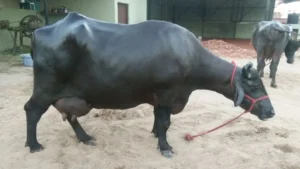

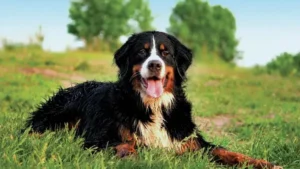



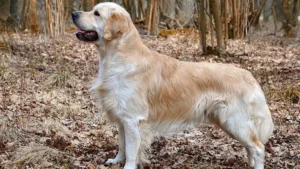
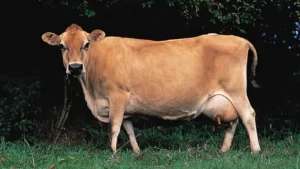

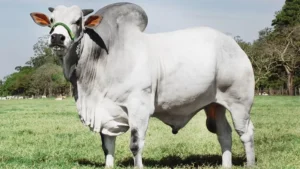

Leave your comment